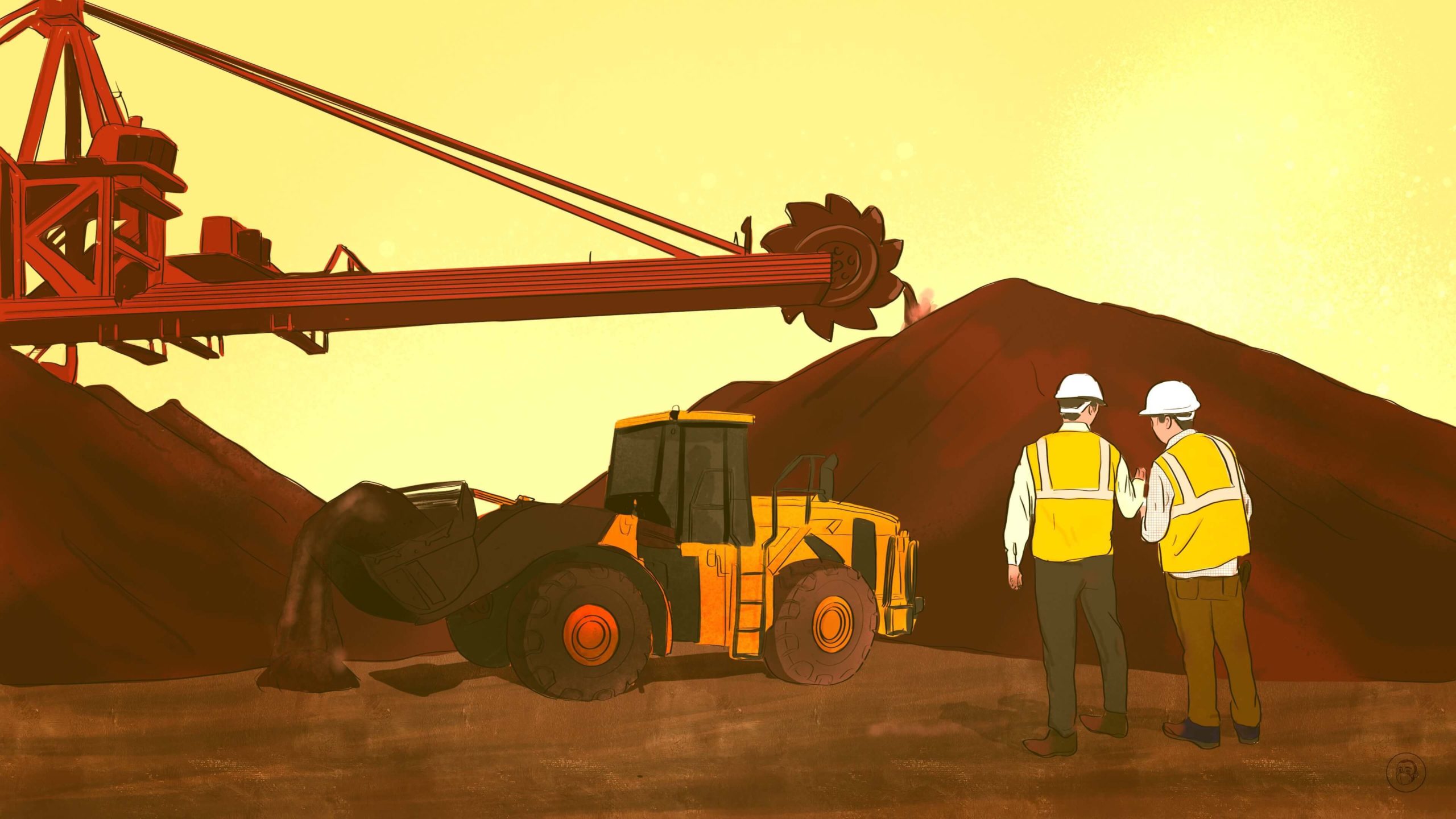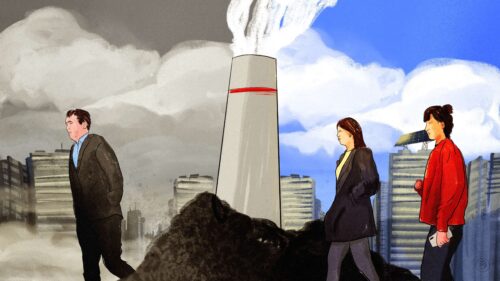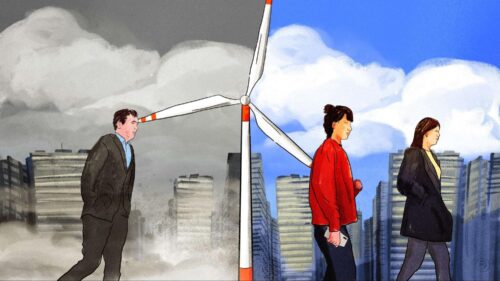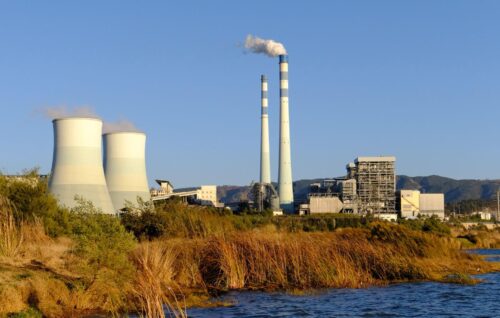The steel industry is cleaning itself up, but not fast enough
Steel production and profits are down, but steel enterprises are under pressure to radically cut carbon emissions. There are some signs of progress, but it may be impossible for one of the world’s dirtiest industries to really go green.

In 1949, China produced 158,000 tons of steel. From 1958 to 1962, Chairman Máo Zédōng 毛泽东 led a misguided attempt to become the world’s top steel producer by melting down pots and pans in backyard furnaces during the Great Leap Forward (1958–62), which did not work, but the economic reforms begun in the late 1970s did: In 1996, China produced 100 million tons of steel, earning it the top spot. China now produces around 1 billion tons per year.
But China’s steel industry is in the middle of a transition away from an emphasis on quantity to a government-mandated shift to high-quality, low-carbon production. It may not be lucrative: Last week, numbers from the major steelmakers showed that output and profits are down, but so are emissions:
- According to the China Iron and Steel Association, national steel production in the first three quarters was 781 million tons, a year-on-year decrease of 3.4%, and the total profit of steel enterprises was 92.8 billion yuan ($12.72 billion), a decrease of 71.34%.
- Over the same period, total energy consumption decreased by 4.1%, the amount of discharged wastewater decreased by 21.46%, and sulfur dioxide emissions decreased by 19.48%.
Ultra-low emission steel?
In 2019, the Ministry of Ecology and Environment and four other government departments issued guidelines for a “high-quality ultra-low emissions transformation” of 80% of China’s total steel production capacity, including a cut in carbon emissions of up to 83%. According to the China Iron and Steel Association, as of the end of September, 34 steel enterprises (accounting for about 179 million tons of steel production capacity) had completed the process of implementing a system of ultra-low emission monitoring and evaluation, and 23 enterprises (accounting for a capacity of about 129 million tons) had completed some aspects of the system. But there are still about 225 enterprises that have not yet completed implementing the system.
According to incomplete statistics compiled by a Chinese news agency, so far, steel enterprises have made a cumulative investment in the ultra-low emission transformation of more than 150 billion yuan ($20.69 billion). The ultimate goal for the steel industry, which accounts for around 15% of China’s total carbon emissions (the highest of all manufacturing industries and second overall behind only the power industry), was to reach peak carbon use by 2025, but this has been pushed back to 2030. By current estimations, the transformation of around 800 million tons of steel production capacity will be completed by 2025, which will leave around 400 million tons still to be completed, and this will require an additional investment of at least 150 billion yuan ($20.69 billion).
China news, weekly.
Sign up for The China Project’s weekly newsletter, our free roundup of the most important China stories.
Cleaning up a dirty industry
The part of steel production with the highest emissions is the sintering process, during which metals such as iron, copper, and aluminum are heated and turned into sintered steel when the particles form a molecular bond. The sintering process accounts for 40% emissions of particulate matter, 70% of sulfur dioxide, and 50% of nitrogen oxides. Further emissions are produced during transportation, loading and unloading, storage, transfer, and transportation of steel.
Steel companies will have to clean up all of these processes to meet government goals, much of which will involve completely replacing old equipment and technology:
- On October 21, Baoshan Iron and Steel announced that it had successfully replaced its equipment used to produce steel sheets used in the auto industry with ultra-low emissions technology, which it claims has reduced its carbon output by 50%.
- The company is also building a hydrogen-based shaft furnace with a capacity of over a million tons, which is set to enter production by the end of 2023.
- By 2025, Baoshan Iron and Steel will have a production capacity of 1.8 million tons per year of steel sheets and silicon steel with net-zero carbon emissions.
- The steelworks in Rizhao, Shandong Province, of SD Steel Rizhao has achieved ultra-low emission of waste gas, and eliminated the discharge of wastewater and solid waste altogether. The facility requires 2.13 tons of water consumption for every ton of steel produced (the lowest level in the industry in China), but it has a power plant that makes use of seawater and that operates with a desalination plant that can supply 20,000 cubic meters (706,293 cubic feet) of water per day.
Steel companies are also using new digital technologies, “smart” manufacturing, and cleaner energy:
- In 2021, steel enterprises invested over 10 billion yuan ($1.37 billion) in digital transformation and upgrading, including artificial intelligence (AI) and 5G industrial internet.
- Nanjing Iron and Steel, for example, has constructed a “smart” steel rolling mill incorporating a digital twin factory, AI, and robotics for raw material sorting, unmanned warehousing, and unmanned vehicles.
- It has now become standard practice in the industry to seal off all emission points of pollutants, and to make use of heavy trucks and transportation with new energy systems.
Is net-zero carbon even possible?
There are indications that at least some of the huge investments described above have not gone to waste:
- According to the China Iron and Steel Association, from 2012 to 2021, the emissions of sulfur dioxide of leading steel enterprises decreased by 81.41% per ton of steel production, while smoke and dust emissions decreased by 63.44%.
- Air quality in areas with high steel production capacity has improved significantly: From 2013 to 2021, the concentration of fine particulate matter (PM2.5) air pollutants in 10 cities with concentrated steel production decreased by an average of 59%.
Ultimately, however, all the new technology will not be enough for China’s steel industry to reach net-zero carbon emissions by 2030. According to one expert, steel production based on hydrogen metallurgy, for example, a cleaner form of energy, will account for only 8% of total steel production in 2040 and 25% by 2060, and this will only contribute a reduction in carbon emissions of 9%.
The best (and likely only) hope for the steel industry is a big reduction in demand for steel. China’s annual steel production and consumption up to 2025, however, will remain at around a billion tons. So the road to net-zero in 2030 looks doubtful at best.






